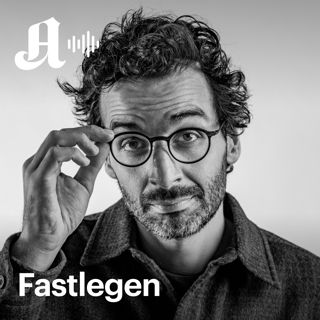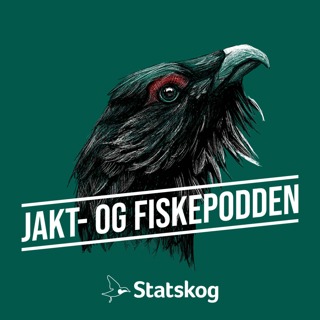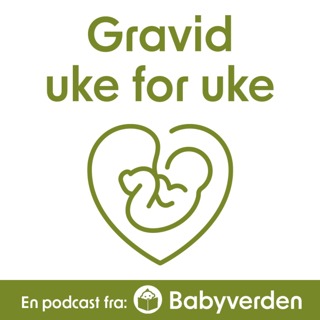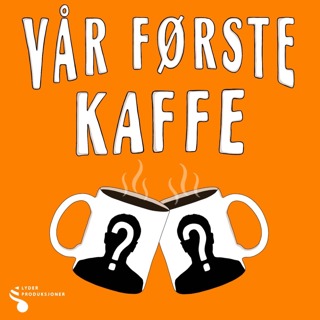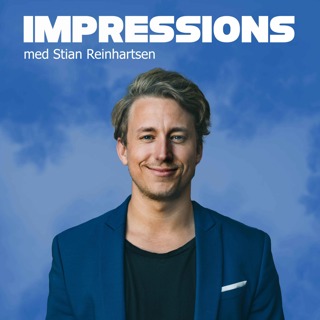
Ep. 346 Genicular Nerve Ablation with Dr. John Smirniotopoulos
In this episode, host Dr. Michael Barazza interviews Dr. John Smirniotopoulos about genicular nerve ablation, an innovative treatment option for the management of osteoarthritis. --- CHECK OUT OUR SPONSORS OBL Marketing https://oblmarketing.com/ Boston Scientific Nextlab https://www.bostonscientific.com/en-US/nextlab.html?utm_source=oth_site&utm_medium=native&utm_campaign=pi-at-us-nextlab-hci&utm_content=n-backtable-n-backtable_site_nextlab_1_2023&cid=n10013202 --- SHOW NOTES Dr. John Smirniotopoulos is an assistant professor of clinical radiology in the IR department at MedStar Georgetown University and MedStar Washington Hospital Center in DC. He developed the idea of genicular nerve ablation after consulting with his orthopedic colleagues at Georgetown about various pain interventions. He then formulated a treatment algorithm that begins with a conservative approach, using a nerve block for ablation. If the initial response is limited, a second ablation can be performed within six months. However, if the patient experiences only a short-term response, genicular artery embolization may be considered. Genicular nerve ablation proves to be a valuable therapy for patients who are not yet ready for knee replacements or need to postpone the procedure due to factors like high BMI or recent organ transplant. The therapy uses fluoroscopy or ultrasound to target four trunks of nerves, including the superomedial genicular, superolateral, inferomedial, and the suprapatellar nerves. The procedure is done under conscious sedation, and Dr. Smirniotopoulos aims for 50% pain reduction with his patients which is usually reached at six weeks. Dr. Smirniotopoulos and his team recently conducted a study to evaluate the outcomes of genicular nerve ablation. The results indicated a significant reduction in both the WOMAC score, which measures pain and functionality, and the Visual Analogue Scale (VAS) score, which is a subjective measure of pain. Surprisingly, they discovered that age over 50 was the biggest predictor of positive outcomes, contrary to their initial expectation that BMI would play a more significant role. They attribute this finding to a higher prevalence of advanced OA in the older age group. Additionally, patients under 50 may have more sports-related injuries such as meniscal tears, leading them to return to high-intensity activities sooner than older patients. Dr. Smirniotopoulos has also seen success in performing nerve ablation in the hip, shoulder, SI, and intervertebral joints. This wide application of the procedure makes it a valuable and versatile treatment option for patients. --- RESOURCES Genicular Nerve Radiofrequency Ablation: Is There a Predictor of Outcomes?: https://www.jvir.org/article/S1051-0443(22)01597-4/fulltext
19 Jul 202349min

Ep. 345 Carotid Interventions with Dr. Ankur Aggarwal
17 Jul 202337min

Ep. 344 SIR Global IR Training Network with Dr. Justin Guan
In this episode, Dr. Michael Barraza interviews Dr. Justin Guan about the SIR Global IR training network. --- CHECK OUT OUR SPONSOR RADPAD® Radiation Protection https://www.radpad.com/ --- SHOW NOTES Dr. Guan starts the episode by discussing the IR program at the Cleveland Clinic, where the large case volume enables their trainees to get their pick about what types of cases they want to do. Dr. Guan then mentions his recent trip to Seoul, Korea for the Asia Pacific IR conference and discusses how he learned about new IR techniques that have not made their way into the mainstream yet. Dr. Guan highlights how the SIR Global training network was created due to a need for an entity that could globally spread IR education. He believes that there are insufficient training opportunities worldwide, and even within the countries that have these opportunities, there is a huge variation in IR training. Then, Dr. Guan highlights initiatives that the SIR Global training network is trying to implement and their current challenges. These challenges include insufficient IR services worldwide, a lack of public awareness about IR procedures, and a lack of data about differences in IR training across different countries. One initiative aimed to address these challenges is the Global IR Juniors summits, which recently got approval to be held at the SIR conference. At this summit, IRs from around the world discuss what updates and new research from their respective IR societies.. Dr. Guan also discusses how they are currently working on the Global Training Network, which will be a database of different IR physicians to provide opportunities for observership and mentorship and it will serve as a hub for a clinical exchange of IR knowledge worldwide. --- RESOURCES Public Awareness of Interventional Radiology: Population-Based Analysis of the Current State of and Pathways for Improvement: https://www.jvir.org/article/S1051-0443(23)00122-7/fulltext Global Assessment of the Status of Interventional Radiology: https://www.surveymonkey.com/r/ZBVFXQ8
14 Jul 202318min

Ep. 343 Microwave Ablation: A Powerful but Underused Modality for Treatment of Spine Tumors with Dr. Majid Khan
In this episode, Dr. Jacob Fleming interviews Dr. Majid Khan, a spine interventionalist and expert in neuroimaging, about microwave ablation, a new treatment modality that has garnered significant attention. --- CHECK OUT OUR SPONSOR Boston Scientific Lab Agent https://www.bostonscientific.com/en-US/customer-service/ordering/lab-agent/contact.html?utm_source=oth_site&utm_medium=native&utm_campaign=pi-at-us-labagent-hci&utm_content=n-backtable-n-backtable_site_labagent_1_2023&cid=n10013205 --- EARN CME Reflect on how this Podcast applies to your day-to-day and earn free AMA PRA Category 1 CMEs: https://earnc.me/1YOW1H --- SHOW NOTES Dr. Khan completed his radiology residency in New York and his fellowship in neuroradiology at John Hopkins. As he progressed in the field, he observed a significant shift in spinal care towards interventional methods and began to study these techniques, which included radiofrequency ablation (RFA) and cryoablation for treating spinal tumors. However, when he treated cases of prostate cancer spine metastases, he realized that RFA was challenging, due to the high bone impedance of osteoblastic lesions. This obstacle piqued his interest in microwave ablation, an alternative technique that employs an electromagnetic wave to induce rapid oscillation of hydrogen atoms in water molecules. This oscillation generates frictional heat, leading to coagulative tumor necrosis. Unlike RFA, microwave ablation significantly reduces bone impedance, making it a promising solution for these cases. Dr. Khan cautions that special care must be taken when operating in areas near nerves due to the elevated temperatures. To ensure safety, he recommends the use of a probe within the frequency range of 900 MHz to 1.2 GHz and the incorporation of thermocouplers as a safeguard during the ablation process. Furthermore, Dr. Khan delves into the indications for ablation based on the extent of tumor metastasis. In cases of oligometastatic disease, he advises a more aggressive treatment approach by extending the ablation zone beyond the actual tumor size. On the other hand, when dealing with diffusely metastatic disease, the primary goal of treatment shifts towards pain reduction. The two conclude their discussion with Dr. Khan’s advice for physicians planning to utilize microwave ablation. He advises them to approach their initial 5-10 cases judiciously, in an effort to minimize the risk of complications that may adversely impact their self-confidence. Having adequate self confidence enhances the likelihood of achieving successful outcomes. For those looking for a valuable resource in the field, Dr. Khan has recently published a comprehensive textbook that features contributions from experts in the field. --- RESOURCES “Assessing long-term locoregional control of spinal osseous metastases after microwave ablation”: https://pubmed.ncbi.nlm.nih.gov/35963064/ Vertebral Augmentation: https://shop.thieme.com/Vertebral-Augmentation/9781684200153 Image Guided Interventions of the Spine https://link.springer.com/book/10.1007/978-3-030-80079-6
12 Jul 20231h 8min

Ep. 342 Radial Access for PAD with Dr. Rami Tadros
In this episode, host Dr. Sabeen Dhand interviews vascular surgeon Dr. Rami Tadros about advantages and indications for radial access in PAD treatment and the current selection of radial access devices. --- CHECK OUT OUR SPONSOR Surmodics Sublime Radial Access Platform https://sublimeradial.com/ --- SHOW NOTES Dr. Rami Tadros is a vascular surgeon and Site Director of Endovascular Aortic Surgery at Mount Sinai Hospital. Dr. Tadros begins by discussing how often he uses radial access in his practice, how current wire and catheter technology limits the potential of radial access, and how evolution of these devices (such as increased length and improved sizing for transradial tools) is on the horizon. Dr. Tadros also discusses the indications and specific advantages for radial access. He describes his device preferences, workflow, and workarounds for radial access. The doctors then take a deeper dive into lengths and sizing of the tools that are currently on the market. They offer some insight on maximizing distance while still maintaining pushability and taking into account the variety of patient anatomy. There is also a brief discussion on pedal access, risks associated with it, and closure complications. Dr. Tadros covers specific clinical vignettes for treating PAD with radial access. There are limitations of the currently available devices, so it is important to plan for distal embolization and bailout stents. We conclude the episode with some guidance for radial access. We review the required tools, the importance of confirming patency of the palmar arch, and the Barbeau test to inform radial access. Dr. Tadros also highlights the use of verapamil, heparin, and nitroglycerin to minimize the risk of vessel spasm. --- RESOURCES Dr. Rami Tadros Twitter: https://twitter.com/VascMD
10 Jul 202344min

Ep. 341 Design Thinking in Healthcare with Dr. Gregg Khodorov
In this episode, host Dr. Aaron Fritts interviews interventional radiologist Dr. Gregg Khodorov about design thinking to improve healthcare outcomes, getting involved with innovation as a trainee, and ways to successfully advocate for idea implementation. --- CHECK OUT OUR SPONSOR RADPAD® Radiation Protection https://www.radpad.com/ --- EARN CME Reflect on how this Podcast applies to your day-to-day and earn free AMA PRA Category 1 CMEs: https://earnc.me/88AWhz --- SHOW NOTES Dr. Khodorov was introduced to design thinking when he was pursuing his MBA before medical school. Design thinking revolves around the idea of human-centered design, and it is useful when thinking about healthcare outcomes. The process involves a combination of the scientific process and creative elements. In medical school, Dr. Khodorov led a student organization that taught innovation concepts and encouraged his classmates to explore the entrepreneurship space. The doctors review examples of good and bad designs, such as pill packs instead of orange pill bottles, the confusing EpiPen drug delivery system, the automated voice system on AEDs, and instructions for scrub machines. Then, they focus on design projects that Dr. Khodorov has been working on during his residency. During his intern year, he introduced design thinking to surgical didactic conferences. As an IR resident, he has embarked on collaboration projects with industrial design students to improve the angio suite. One of these improvements was ceiling-mounted lighting that improves visibility during procedures. Dr. Khodorov believes that valuable insights can be offered by people outside of medicine, since they often question the status quo of healthcare and can generate ideas to solve efficiency and safety problems. He notes that it is important to judge two specific characteristics of each idea– effort and impact. The best ideas are the ones with the lowest effort and the highest impact. The next step is to convince stakeholders to accept and invest in the idea. It is helpful to find key performance indicators, forecast numerical outcomes, and identify mentors who will champion the idea. Pitching an idea as a quality improvement initiative is a great way to get dedicated time to work on the project, although it is important to pay attention to institutional policies about intellectual property. Throughout the episode, Dr. Khodorov shares some of his favorite innovation resources, including conferences, workshops and books. --- RESOURCES Health Design Lab: https://www.healthdesignlab.com/ Health Design Thinking: https://www.amazon.com/Health-Design-Thinking-Creating-Products/dp/0262539136 Google Ventures: https://www.gv.com/ This is Service Design Doing: https://www.thisisservicedesigndoing.com/
7 Jul 202342min

Ep. 340 Awake Spine Surgery with Dr. Alok Sharan
In this episode, Dr. Jacob Fleming interviews Dr. Alok Sharan about low back awake spinal surgery. This innovative approach offers patients a more pleasant surgical experience compared to traditional surgery under general anesthesia. Not only does it provide better patient outcomes, but it also reduces the need for opioid pain medication and allows for improved mobility after the procedure. --- EARN CME Reflect on how this Podcast applies to your day-to-day and earn free AMA PRA Category 1 CMEs: https://earnc.me/3kWFrM --- SHOW NOTES Dr. Sharan began his career in academic medicine at Montefiore, where he gained valuable experience in caring for individuals with severe back problems requiring spine surgery. During his time at Montefiore, Dr. Sharan recognized the changing landscape of healthcare and decided to pursue a healthcare MBA. This unique combination of medical expertise and business knowledge led him to transition to private practice. Dr. Sharan explains that awake spinal surgery offers several benefits for patients undergoing spine procedures. It enables patients to mobilize and recover from surgery more quickly, leading to faster overall recovery times and decreased risk of delirium. Additionally, patients have the opportunity to return home on the same day as the surgery, promoting a more convenient and comfortable experience. Awake spinal surgery also helps reduce the reliance on narcotics for pain management, with patients typically only needing narcotics for around four days compared to the usual four to six weeks with surgeries performed under general anesthesia. Due to the improvement in patient outcomes and the tremendous cost-efficiency of the procedure, awake spinal surgery is an appealing option for individuals requiring spinal fusions and other procedures. Dr. Sharan's entrepreneurial drive has led him to create a comprehensive preoperative education program. His patients are provided with virtual reality headsets to simulate and experience the day of surgery and the actual surgical procedure. The aim is to alleviate any fears or anxieties the patients may have prior to undergoing surgery by immersing them in a realistic virtual environment. This approach helps to prepare patients mentally and emotionally, ensuring a smoother and more comfortable surgical experience. Dr. Sharan is now sharing his techniques with surgeons around the world and anticipates this technique being implemented in many fields in the future. --- RESOURCES Awake Spinal Fusion: https://awakespinalfusion.com Doc Social: https://doc.social Dr. Sharan’s LinkedIn: https://www.linkedin.com/in/alok-sharan-6a612610/
5 Jul 202349min

Ep. 339 The Importance of a Multidisciplinary Filter Retrieval Team with Dr. Warren Clements and Dr. Premal Trivedi
In this episode, guest host Dr. Robert Ryu interviews Dr. Warren Clements and Dr. Premal Trivedi about the current state of IVC filter retrievals, obstacles to increasing retrieval rates, and their experiences with implementing programs to increase IVC filter retrieval rates within their respective healthcare systems. --- CHECK OUT OUR SPONSOR Boston Scientific Lab Agent https://www.bostonscientific.com/en-US/customer-service/ordering/lab-agent/contact.html?utm_source=oth_site&utm_medium=native&utm_campaign=pi-at-us-labagent-hci&utm_content=n-backtable-n-backtable_site_labagent_1_2023&cid=n10013205 --- SHOW NOTES Dr. Clements begins the discussion by giving an overview of his recent paper published in CVIR, which explores a novel multidisciplinary approach to IVC filter retrievals. He introduces key features of the Australian healthcare system that contribute to their strengths and challenges with IVC filter retrievals. Dr. Clements emphasizes the positive correlation between maintaining an active database of all IVC filter patients and increased retrieval rates. He discusses the limitations of their previous approach towards IVC filter retrievals, which relied on referring physicians and an automatic retrieval referral system. This passive model posed issues with timing and led to a lower retrieval rate. He also highlights the differences in governmental oversight and filter utilization between Australia and the US, emphasizing the importance of aiming for a 100% retrieval rate. The new approach at his hospital involves a multidisciplinary team, which has resulted in retrieval rates going from 53% to 74% . Next, Dr. Trivedi discusses his recent paper, which is also focused on quality improvement surrounding IVC filter retrieval. He describes his health system’s previous passive approach that relied on a follow-up list of all patients with IVC filters. The list was checked monthly, and letters were sent to patients providing the status of their filters along with educational material. However, since 2016, they have adopted an active methodology, which relies on the IR team actively evaluating the list of patients with an IVC filter and verifying whether retrieval is appropriate in each case. This active approach engages referring doctors and schedules retrievals as needed. Implementing this new methodology has resulted in an increase in IVC retrieval rates from 49% to 61%. The doctors discuss the significant number of filters placed before 2010 that still need to be retrieved. They emphasize the need for a central dedicated team to take responsibility for filter follow-up and retrieval, and they highlight potential role of AI in automating the process and addressing issues related to patients who are lost to follow-up. Finally, they discuss the future of filter retrieval. Both Dr. Clements and Dr. Trivedi stress the importance of knowing the IVC retrieval rate to set goals accordingly. Dr. Clements shares his team's goal of reducing median dwell time to less than 150 days and the benefits of establishing a national registry. Dr. Trivedi emphasizes the need for incremental goals and celebrating small wins on the path towards increasing overall filter retrieval rates. He also discusses the importance of aligning economic and health incentives and leveraging existing AI technology. They all agree that achieving a 100% filter retrieval rate requires a collaborative effort within a multidisciplinary team. --- RESOURCES “Improving the rate of inferior vena cava filter retrieval through multidisciplinary engagement” by Clements et al: https://www.ncbi.nlm.nih.gov/pmc/articles/PMC9958400/ “Inferior Vena Cava Filter Retrieval Rates Associated With Passive and Active Surveillance Strategies Adopted by Implanting Physicians” By Trivedi and Ryu et al: https://jamanetwork.com/journals/jamanetworkopen/fullarticle/2802524
3 Jul 202347min


